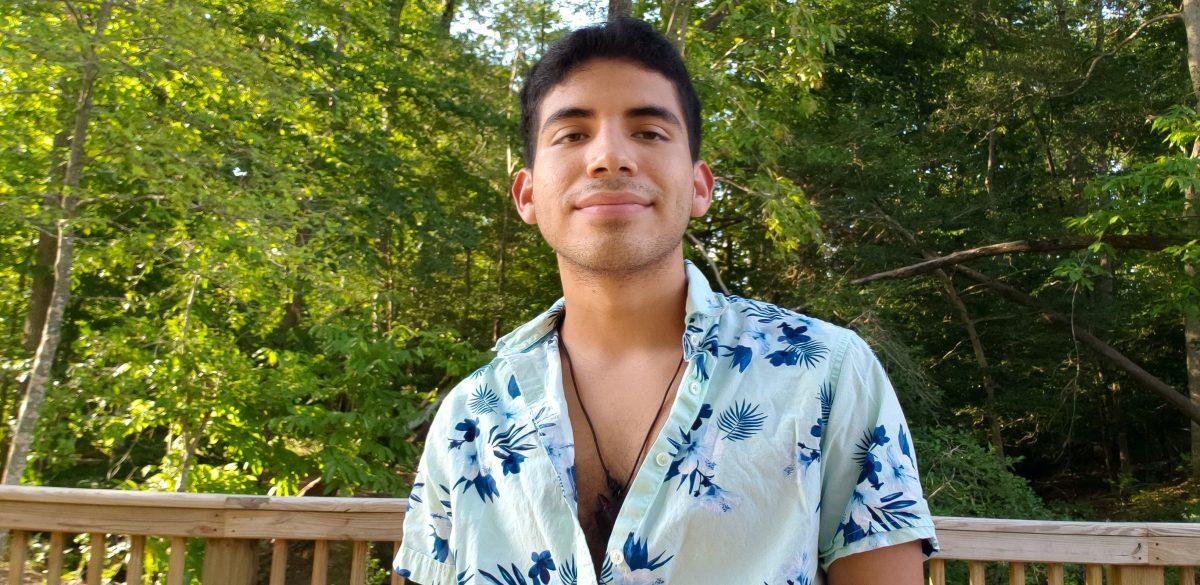It’s safe to say that most NC State students, staff, faculty and alumni are more than familiar with Harris Field. Situated right beside Witherspoon Student Center, the field has always served as a mini hub for various student gatherings, from summer picnics to pop-up sales to Wolfline bus stops and public demonstrations. This semester, that all-too-familiar lawn has been replaced by The Den, a gargantuan sand field sprinkled with Wolfpack-red lounge chairs.
According to the Department of Academic and Student Affairs’ (DASA) news site, The Den is “a temporary outdoor space where the Wolfpack can safely socialize in-person during the COVID-19 pandemic.” This basic premise — borne from the collaboration of organizations like DASA, grounds and building services and, amusingly, Coca-Cola — sounds like a solid plan to give students an outlet for fun in an otherwise miserable year. But as all things are, no plan is truly perfect, and there are many downsides to The Den that need to be addressed.
While the promise of a moving social hub seems exciting, it’s important to note the architecture of said area. NC State residents are more than familiar with the multiple sand lots around campus, and any new addition feels unnecessary. This is further highlighted by two facts: One, there’s already a sandy volleyball court right across from Harris Field and beside Bragaw Residence Hall; two, there is no reason to believe a sand lot with a few chairs will encourage social distancing.
During the research for this column, I got in contact with Sarah Ketchem, director of grounds and building services, who kindly told me planners of The Den knew Harris Field tended to flood due to soil overuse, and that they saw the sand “as an opportunity to define the space for the interim and re-turf at the end of the semester.” And while I sympathize with the idea of rebranding an area to breathe new life into it, there are better ways to fix the environmental drawbacks of conventional lawns than temporarily slapping sand over the ground.
And while the prospect of providing students with jobs during an economic downturn is more than promising, I also believe that there is something deeply troubling about hiring student workers to monitor the behavior of their peers. Ensuring social-distancing guidelines should really not be the job for us to follow through, and last semester’s lax guidelines were more than enough proof to show drawbacks to this plan.
What’s most troubling about The Den’s existence, however, is really just the lack of student input. During my email conversation with Ketchem, I asked which student groups were able to voice their opinions on The Den before its construction. The answer was that no student groups were directly consulted in the making of The Den, and that my question brought awareness to this need.
Indeed, this is hindsight for many reasons. For years, Harris Field has been used by various student organizations to host events, and any changes to the site would result in student feedback. This holds especially true for many Black organizations on campus, considering the African American Cultural Center is right beside the field. This hindsight is evident from most of the student reactions about the site — and considering how Coca-Cola is part of the collaborators at The Den and not student organizations, I’m not surprised a few dissenting voices are calling it gentrified and anti-Black.
Every piece of architecture and urban design has social consequences. If even the most idealist architectural movements — including architectural modernism and brutalism — can exacerbate social issues, then it should follow that even the smallest design shifts can have a profound impact on a society. The Den just happens to be another small-scale example on just how influential the design of a public space can be on a community.
Students should be happy to know that there’s a Google form to submit questions, comments and concerns about The Den. I encourage students to reach out to administrators about The Den, not only because it provides them ample feedback on how to use Harris Field in the future, but because it highlights the need for administrators to consult and continuously communicate with the student body. And while The Den might be a temporary misstep, Harris Field is here to stay, and it would do the University good to know that it’s one of the most cherished sites on campus, mud pools and all.














